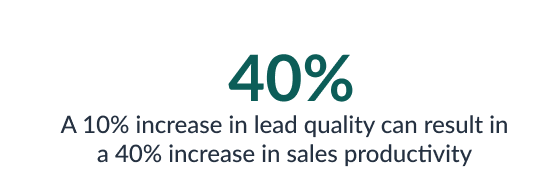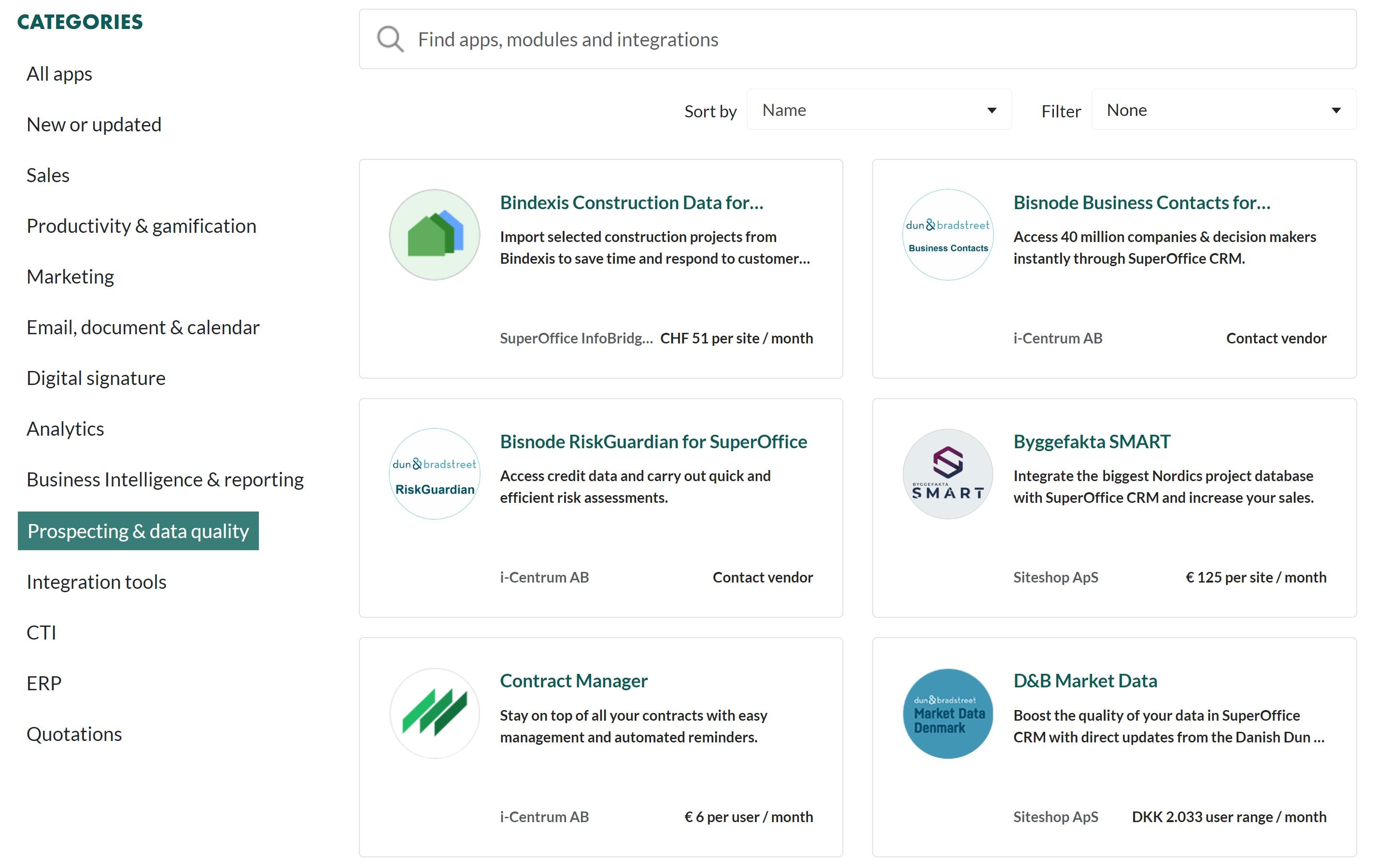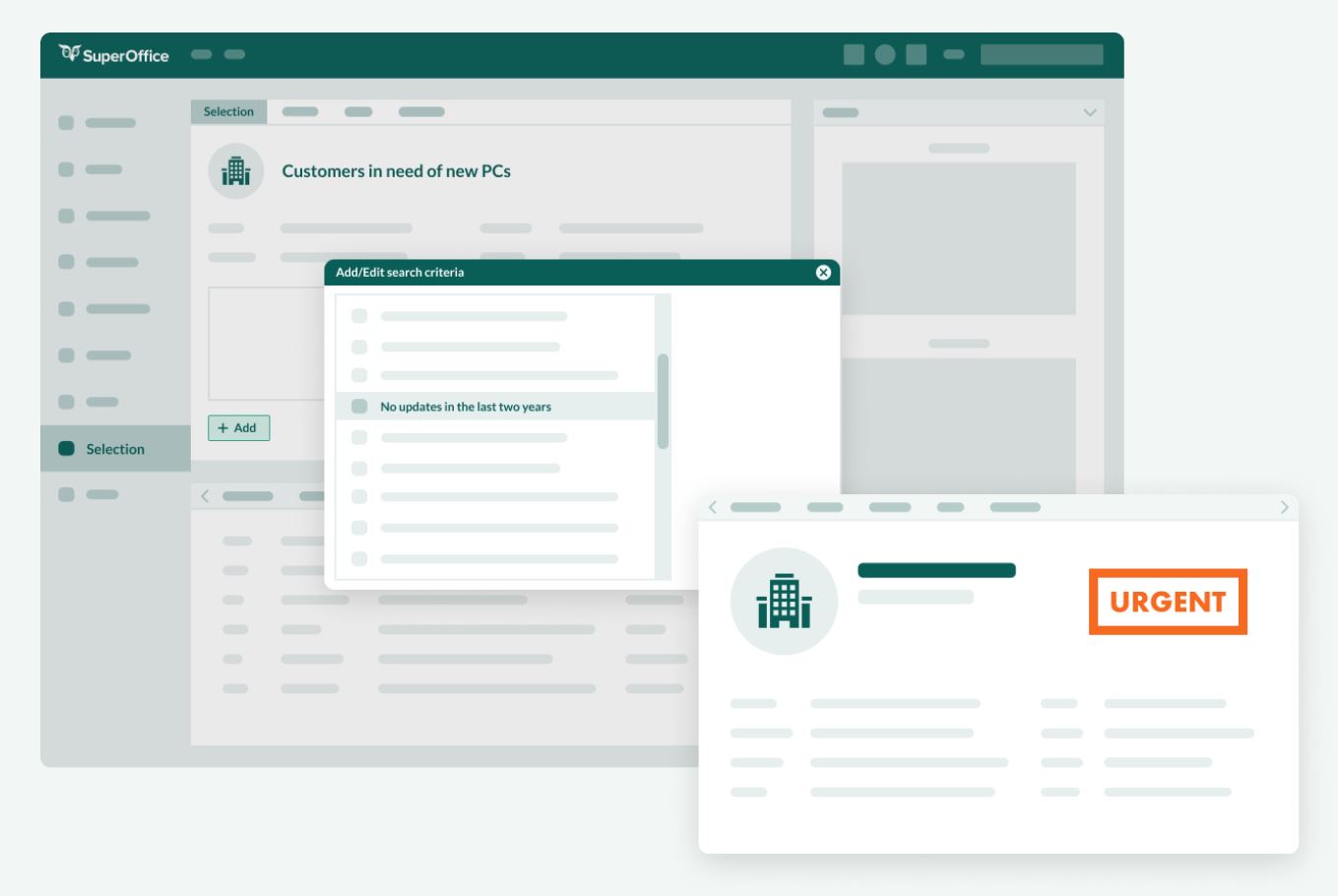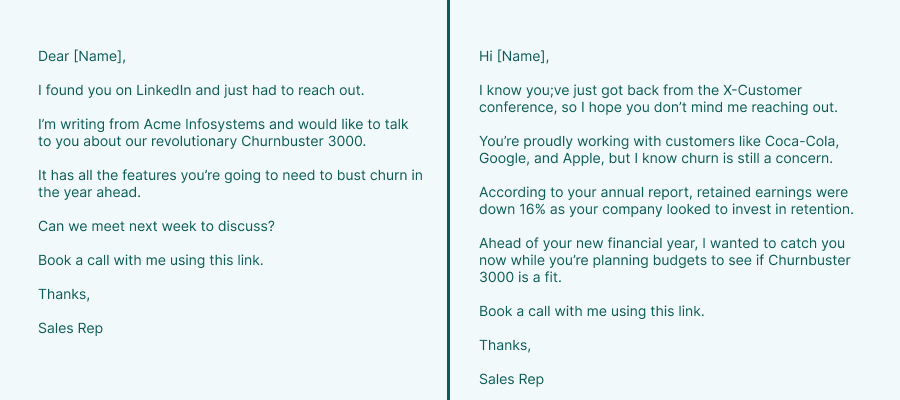Prospecting is tough.
More than 40% of salespeople say that prospecting is one of their biggest challenges.
Meanwhile, 46% of B2B sales reps say lead quality is a major issue.
So, it’s understandable that you’re looking at solutions like data enrichment to help your sales team prospect more effectively and generate high-quality leads.
However, it’s not always easy to know how to start using rich data and which data types will have the biggest impact on your sales process.
This article outlines the main types of rich data, how to gather it effectively, and how to make it work for you – to help you get started.
To begin with, let’s examine what rich data actually is, and why it’s essential for sales success.
What is rich data?
Data enrichment takes existing information and enhances it with additional data from other third-party sources.
This enrichment process turns ordinary contact information into rich, high-quality data that helps sales teams understand their prospects better – and ultimately close more deals.
For example, you may have a list of names and email addresses of conference attendees. But how do you know who you should be speaking to?
Turning this basic data into rich data gives you the opportunity to understand more about who they are, the companies they work for, and the potential pain points they have.
But why is doing this research essential for B2B sales success?
Why rich data is essential for prospecting success
84% of sales leaders agree that generating your own leads can help you exceed your sales quota and contribute to ongoing sales success.
Generating your sales leads through prospecting can be time-consuming, so you should ensure you only go after high-quality opportunities.
This is because making just a 10% increase in lead quality can lead to a 40% increase in sales productivity.

Enriching your lead data is one of the best ways to improve the quality of your leads, because it offers you benefits like:
- Focusing on the right targets. Leveraging data to concentrate on the right types of prospects (rather than a “spray and pray” approach to cold outbound activities) will help make your prospecting activities more effective.
- Coming up with more specific offers. Using rich data to uncover pain points or opportunities rather than going into conversations “blind” will help you create a more compelling proposition for your potential prospects.
- Boosting response rates. Rich data can help you demonstrate that you’ve considered the value you can add to a potential prospect.
This means they’re more likely to respond to your message than a generic message that doesn’t resonate with them!
So, you’re probably thinking, “OK, this all sounds good, but what kinds of rich data should my sales reps and I be using?”
The main types of rich data used in B2B sales prospecting
A huge benefit of using enriched data to help power up your prospecting efforts is that you can focus exclusively on contacts who match your ideal customer profile.
To help you with this, there are four main types of additional data you can use to enrich the basic information you already have.
1. Firmographic
Firmographic data gives you insights into the companies you’re targeting as potential customers.
This can include everything from company size, industry, revenue, and location to specifics on organizational structure and key stakeholders.
B2B sales are all about selling to other businesses, so this kind of data is critical to helping you pinpoint the right companies to contact while prospecting.
2. Technographic
Technographic data gives you an overview of the types of technology already used by the companies you want to speak to.
Typically, this includes information on their entire IT infrastructure, including software and hardware, as well as specialist technology like manufacturing equipment.
Understanding your prospects' technology environment will help you quickly identify opportunities to position your product as a way to improve their tech stack.
Technographic data is most useful for software and IT companies, so depending on the type of products or services you sell, you may decide not to focus too much on it.
3. Demographic
Demographic data is all about the people inside an organization. It’ll give you insights into key stakeholders, target personas, and other relevant employees.
Data you can expect to uncover includes things like age, gender, occupation, experience, and education.
Using this data can help you focus your efforts on the most influential people in the organization or those you believe most likely to engage with your prospecting campaign.
It can also help you humanize your outreach efforts by allowing you to understand a little bit about your prospects before you meet them, helping you build better relationships.
4. Engagement & Intent
Engagement and Intent data looks at how a particular person has interacted with you or your company in the past, giving you an understanding of their potential to become a customer.
This can include things like website visits, email signups, content downloads, or even if they’ve engaged with your brand on social media.
It can also include historical data relating to previous sales, as well as calls or other interactions they may have had with you, perhaps for other products you offer.
Using this data is a great way to identify prospects that are potentially further along the buyer's journey and ready to speak to someone from Sales.
How you can gather high-quality, rich data effectively
Depending on your approach to prospecting, the four main kinds of rich data we’ve identified can help sales reps better understand a prospect.
But how do they get this additional data? And what tools can they use to help them?
We’ve identified three key ways to gather high-quality, rich data effectively.
Third-Party sales intelligence
One of the easiest ways to get started with enriching your prospecting data is to use third-party sales intelligence tools to provide you with the right information.
Because accurate data can be difficult and time-consuming to capture and quickly become outdated, it makes sense to use a specialist provider rather than gather it yourself.
Third-party sales intelligence tools offer you accurate and up-to-date firmographic, technographic, and demographic information that you can use to enrich your data.
There are many options available, whether you’re looking for a general provider of demographic information or a niche provider of firmographic data for your industry.
In fact, SuperOffice has a dedicated section in our app store dedicated to prospecting and data quality integrations – making it incredibly easy to get started with data enrichment.

Online research
Online research can help you capture engagement and intent data, as well as up-to-the-minute background information on prospects and their companies.
Methods you can use to research online include:
- Corporate social media pages for the latest news and insights
- LinkedIn profiles of individual stakeholders for recent posts and achievements
- Company websites to understand positioning and potential pain points
- Web analytics tools to understand previous visits to your website
Capturing this additional “live” information allows you to enhance your outreach messages with highly relevant and personalized insights – increasing your chances of a response.
CRM
The best way to bring all your third-party and independently researched data together is inside your CRM.
Using a CRM allows you to create contact records that combine all the individual data points you’ve collected. It also helps you organize them into a pipeline of prospects to work on.

On top of that, a CRM offers several other benefits that you can take advantage of as you gather and use your enriched prospect data, including:
- Combining disparate sources of information into a central source of truth
- Building up a full 360° view of your prospects' interactions with you
- Staying on top of communications and tracking team performance
- Integrating directly with third-party data sources for enriched data
- Searching, segmenting, and refining the prospects you work on
But once you’ve enriched your prospect data and got it organized in your CRM, how do you actually use it?
5 ways to use rich data to enhance B2B prospecting
It’s one thing to have enriched data full of insights about your potential customers. But for it to be valuable, you need to use that data effectively!
To help you get started, we’ve identified five key ways you can use your rich data to help your sales reps prospect more effectively.
1. Personalization
Using the data you’ve collected to make a big impact doesn’t have to be difficult or time-consuming. Adding some specifics about the person or company you are targeting can take your cold outreach efforts to new heights.
For example, take these two emails, one using personalized data and one without.
Which one are you more likely to respond to? The personalized one or the generic one?

2. Segmentation
The beauty of having such rich sales lead data is that you can use it to your advantage by adapting your message to suit a particular target audience.
To help you with this, you can use a CRM, like SuperOffice, to filter customer profiles based on criteria that match your ICP or a specific segment you want to target.
Armed with that specific cross-section of your newly enriched data, you can create messaging and value propositions exclusively for that segment.
Combined with enriched sales data, this segmented approach will bring you sales success – with 80% of companies reporting an increase in sales after using segmentation.
3. Cross-sells, upsells and expansion
Prospecting doesn’t have to be all about brand new business – you can use enriched data to target your existing customers, too.
Looking at historical engagement and intent data, you can identify existing customers who are prime for an upsell of an existing product or a cross-sell of a new product.
This could be as simple as taking data that looks at website interactions, noting that certain existing customers are visiting your pricing page or solutions page, and then using this as a catalyst for a conversation.
4. Getting the timing right
Access to firmographic and demographic information means you can interrogate that data to produce strategic takeaways that will transform your prospecting process.
One such strategic takeaway is timing – and getting the timing right for your approach.
For example, with the right data, you can understand things like:
- When does their financial year end? So you can influence budgets
- Is the company hiring, or are they cutting costs with layoffs?
- Has the company announced a new investment round?
Getting the timing right by using this information to your advantage will separate you from your competitors, who won’t think so strategically about prospecting.
5. Prioritizing leads
Another way you can use rich data to help make your prospecting more effective is by using the information to prioritize which leads to pursue.
Analyzing data to identify potential buying signals, such as recent website visits or previous engagement with content, will give you a head start with these prospects.
As a result, you should prioritize them over other leads yet to demonstrate such clear buying signals.
All these ways of using rich data to enhance your prospecting performance require a CRM system to bring them to life.
So, how can a CRM platform help you to prospect effectively?
How a CRM platform can help you prospect effectively
Here at SuperOffice, we’re big believers in the importance of building strong business relationships and their impact on revenue.
One of the key ways you can build long-lasting relationships is to have mutual interests and things in common.
Rich data helps you understand which potential prospects you have the best chance of developing a fruitful business relationship with.
Instead of spending time on poor-fit prospects, you can use the rich data stored in your CRM to identify exactly who you should be speaking with – making prospecting more efficient overall.
Alongside a feature set designed to help marketing, sales, and customer service build successful relationships, there are several features you can use to help you prospect:
- Enhanced filtering to segment the right groups of prospects
- Advanced marketing and personalization options to tailor every message
- Easy integrations with leading third-party sales intelligence data providers
- Superior tracking to monitor the engagement with your prospecting efforts
- Reporting and dashboards to understand how your sales team is performing
- And much, much, more…
Ready to use prospect data to create revenue-generating customer relationships?
Book a demo of SuperOffice today and learn how your sales, marketing, and service teams can all thrive using one CRM platform.



